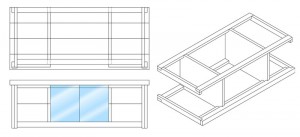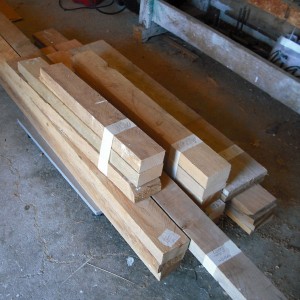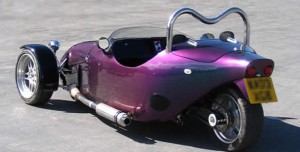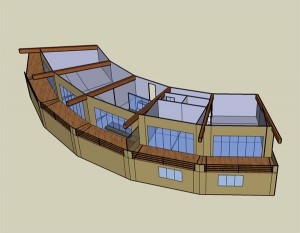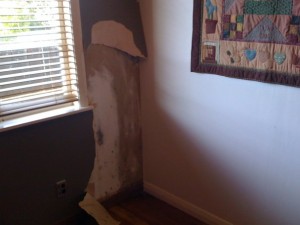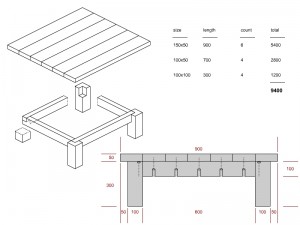In the early 50’s, when people were nuts, there was an Italian refrigerator-and-scooter manufacturer who decided they wanted to mass-produce a micro car.  The Isetta was born.  Designed and first produced by Iso SpA, variations of it were produced by many manufacturers in many countries.
This tiny egg shaped car was only 2.3m by 1.4m, and powered by a 236cc two-stroke. Â To get in, the whole front of the car swung outward as the door, with the steering wheel and instrument panel attached. Â It had a top speed of around 74km/h, but apparently took 30 seconds to reach 50km/h!
I love the this quote from Isetta Broker:
It is said that the stylists had arrived at the design of the Isetta by taking two scooters, placing them close together, adding a refrigerator and shaping the result like a teardrop in the wind.
At first I dismissed it as an ugly (but weirdly cute) throw-back, but the more I researched it, the more I have come to like it’s cute 50’s retro style. Â Perhaps not a model on which to base my project, but a great early example of the species.
My favorite image has to be the Isetta pulling that tiny teardrop caravan. To really get a feel for how small that caravan must be you only need to take a look at the last image (with the family) to put the scale of the Isetta in perspective!

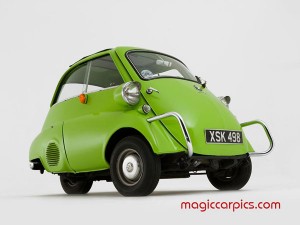
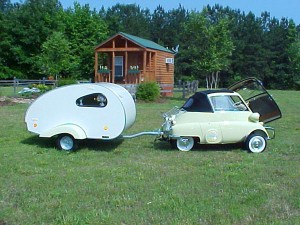
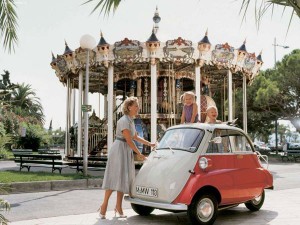
Image sources: Al & Ed’s Autosound, magiccarpics.com, emmiebean, netcarshow.com
More information about the Isetta, visit: Isetta Broker
